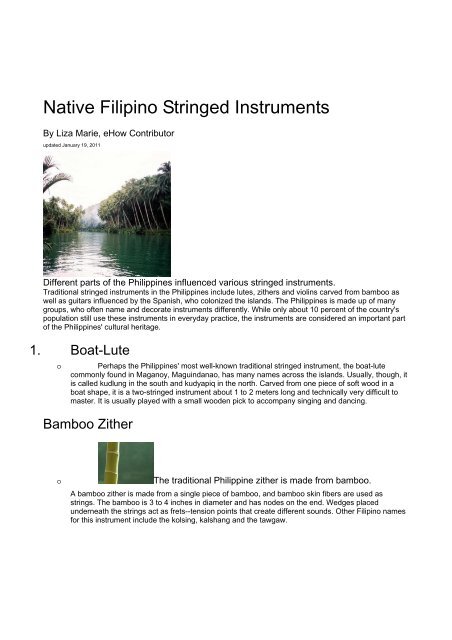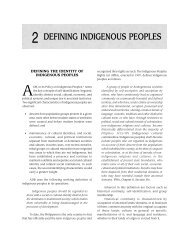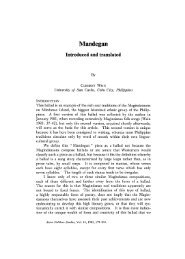Native Filipino Stringed Instruments - Philippine Culture
Native Filipino Stringed Instruments - Philippine Culture
Native Filipino Stringed Instruments - Philippine Culture
You also want an ePaper? Increase the reach of your titles
YUMPU automatically turns print PDFs into web optimized ePapers that Google loves.
<strong>Native</strong> <strong>Filipino</strong> <strong>Stringed</strong> <strong>Instruments</strong><br />
By Liza Marie, eHow Contributor<br />
updated January 19, 2011<br />
Different parts of the <strong>Philippine</strong>s influenced various stringed instruments.<br />
Traditional stringed instruments in the <strong>Philippine</strong>s include lutes, zithers and violins carved from bamboo as<br />
well as guitars influenced by the Spanish, who colonized the islands. The <strong>Philippine</strong>s is made up of many<br />
groups, who often name and decorate instruments differently. While only about 10 percent of the country's<br />
population still use these instruments in everyday practice, the instruments are considered an important part<br />
of the <strong>Philippine</strong>s' cultural heritage.<br />
1. Boat-Lute<br />
o<br />
Perhaps the <strong>Philippine</strong>s' most well-known traditional stringed instrument, the boat-lute<br />
commonly found in Maganoy, Maguindanao, has many names across the islands. Usually, though, it<br />
is called kudlung in the south and kudyapiq in the north. Carved from one piece of soft wood in a<br />
boat shape, it is a two-stringed instrument about 1 to 2 meters long and technically very difficult to<br />
master. It is usually played with a small wooden pick to accompany singing and dancing.<br />
Bamboo Zither<br />
o<br />
The traditional <strong>Philippine</strong> zither is made from bamboo.<br />
A bamboo zither is made from a single piece of bamboo, and bamboo skin fibers are used as<br />
strings. The bamboo is 3 to 4 inches in diameter and has nodes on the end. Wedges placed<br />
underneath the strings act as frets--tension points that create different sounds. Other <strong>Filipino</strong> names<br />
for this instrument include the kolsing, kalshang and the tawgaw.
Spanish Guitars<br />
o<br />
<strong>Philippine</strong> guitars are similar to Spanish guitars.<br />
The banduria, laud and octavina are <strong>Philippine</strong> instruments created with an influence by Spanish<br />
guitars. The <strong>Philippine</strong> banduria is similar to a mandolin but has 14 strings. The round-bodied laud is<br />
tuned one octave, or eight notes, lower than a banduria and has F-shaped holes instead of one<br />
round hole. An octavina has 14 strings and is essentially a laud shaped like a guitar. A pick is used<br />
to play all these instruments.<br />
Bamboo Violins<br />
o<br />
Some <strong>Philippine</strong> bamboo instruments are played with a bow instead of plucked. Europeanstyle<br />
violins of the <strong>Philippine</strong>s include the biyulin, or gologod, and the onabir, or nabir. Each has one<br />
section of bamboo closed off with nodes at both ends and three strings made of steel or pineapple<br />
fiber. The instruments are played with a bow made from bamboo and abaca fiber. A spike fiddle of<br />
the Bilaan is called the duwagey.<br />
Ref.: http://www.ehow.com/info_7821235_native-filipino-stringed-instruments.html

















